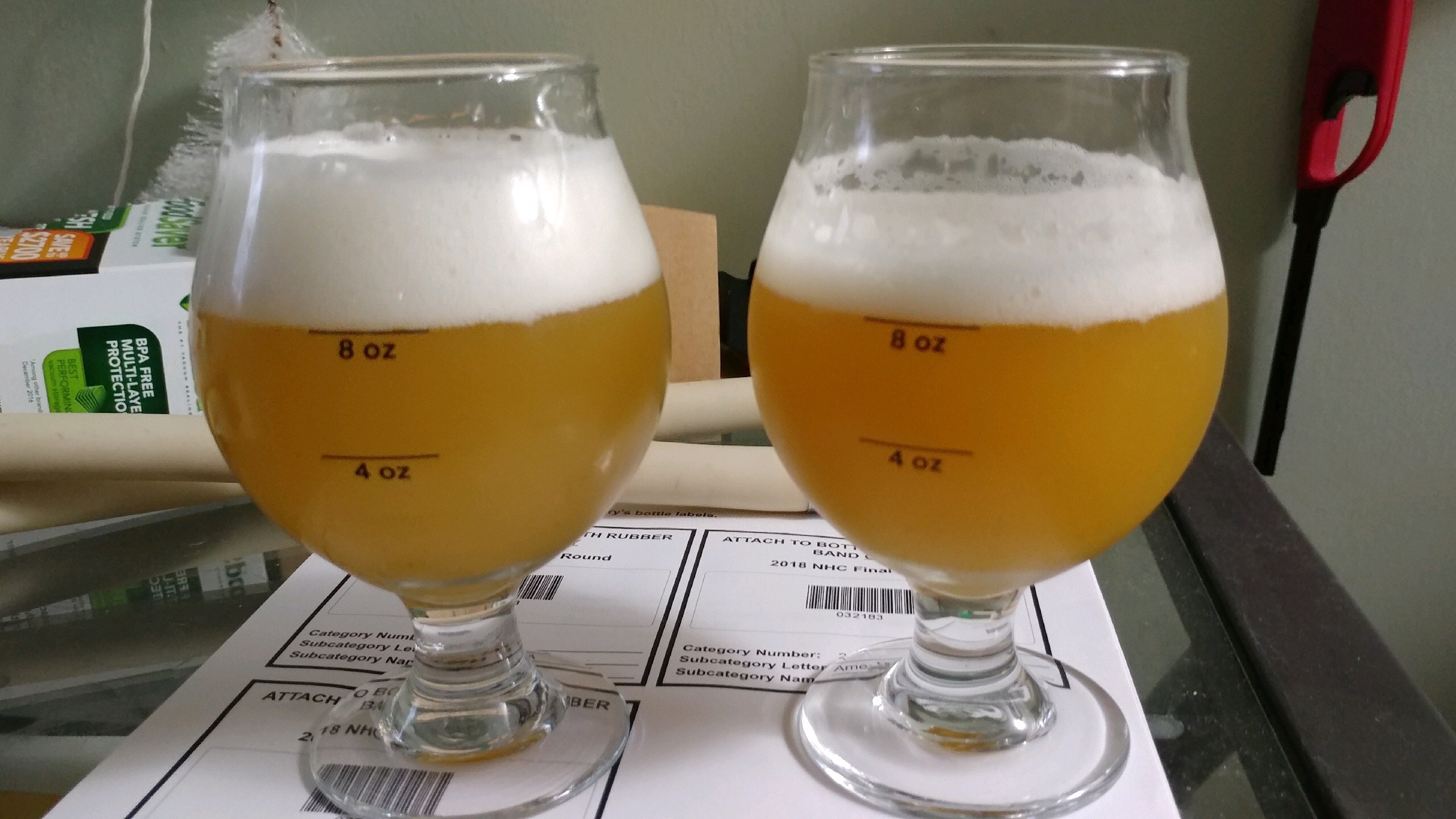This has got to be the most stark color change I’ve ever witnessed in a NEIPA. This is what the beer looked like coming out of the keg after about 3 weeks (glass on right us latest batch, glass on left is 10 days older batch).

This is what the NEIPA yeast harvest / beer looks like in the fridge after those same 3 weeks (sitting next to lambic culture/beer for pale beer comparison)

Grain bill is 2 row, oats, wheat, and flaked barley. London ale 3 and biotransformation dry hop in primary. Sloppily dumped yeast from carboy into jar after transferring the beer sitting on top of it into keg. Jar is sealed tight. Totally stunned at the color change - especially considering it’s coming out “normal looking” out of the keg. What is it about this style that does this?!

This is what the NEIPA yeast harvest / beer looks like in the fridge after those same 3 weeks (sitting next to lambic culture/beer for pale beer comparison)

Grain bill is 2 row, oats, wheat, and flaked barley. London ale 3 and biotransformation dry hop in primary. Sloppily dumped yeast from carboy into jar after transferring the beer sitting on top of it into keg. Jar is sealed tight. Totally stunned at the color change - especially considering it’s coming out “normal looking” out of the keg. What is it about this style that does this?!
Last edited:





![Craft A Brew - Safale BE-256 Yeast - Fermentis - Belgian Ale Dry Yeast - For Belgian & Strong Ales - Ingredients for Home Brewing - Beer Making Supplies - [3 Pack]](https://m.media-amazon.com/images/I/51bcKEwQmWL._SL500_.jpg)

































